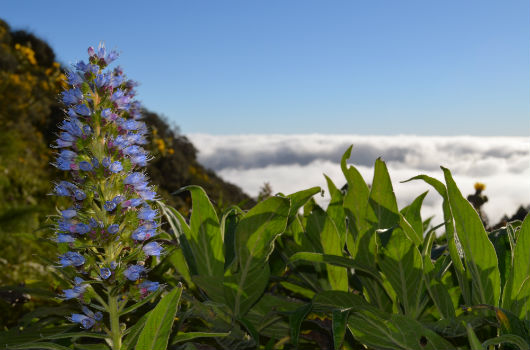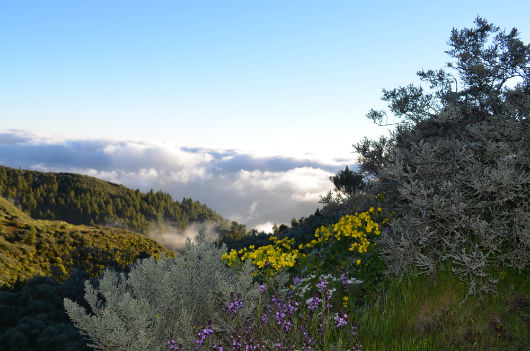The footpath that leaves from Caldera de Los Marteles to Tenteniguada is one of the many spots on the island that seems to have been specially created for walkers to fall in love with. There are no wasted steps along this route.
Despite there being nothing but natural surroundings, there are plenty of pleasant surprises in store for visitors. The immensity of the landscape is truly awe-inspiring. The fact you can be walking above the clouds is a sensation that will thrill even the most demanding walker. It is pure luxury to walk around areas that are completely untouched by man and industry, as we come face to face with ourselves.

The walk will take us up to between 1,000 and 1,500 metres altitude, with severat places reaching this top altitude. The local flora is highly varied but the king of the botanical species along the way is undoubtedly the Blue Tajinaste of Gran Canaria. It is a stunningly beautiful branchy bush that can reach up to three and a half metres in height.
Its largest and best known town is in this area. We recommend visiting here between January and April, when the plant is in full bloom. This will provide a blue memory for visitors, a beautiful serene blue unlike any other. Other plants that abound around here are the yellow broom and the Tenteniguada thistle. The route is a privileged one that enables visitors to get up close to many botanical species of the island.

Another sweet surprise awaiting us are the different water springs dotted along the route, providing all the humidity to enable the vegetation to keep growing around the region. Care must be taken when walking, so as not to miss the flight of hawks and kestrels that inhabit the skies around this area. They embellish the landscape and enrich its biodiversity.
At nightfall, even on hot days in mid-summer, mist often floats in and covers the landscape in a warm grey veil, as it did to me when I bumped into this Bombus Canariensis, known as the Canarian Bumblebee. It is a species that also lives along our route, and one of the finest pollinators on the island.

My friend the insect works tirelessly flying from flower to flower, freeing the energizing nectar while transporting the pollen which in turn guarantees the future generations of woods and fields. What would become of our forests without our little heroes, as so many plants are dependent on the efforts of the bee. These include tajinastes, thistles, broom, pechugones, salvias, and so on… The reward for its work is reflected in it being included in the new Catalogue of Protected Species as being "of interest for Canary ecosystems". Something so tiny, yet so important.

And that is how everything seems to slot in around here. Everything becomes beautiful once we have walked on the ground here. The roots that are often visible on our way round are a reminder of where we come from and what we really need to take care of and keep alive.
